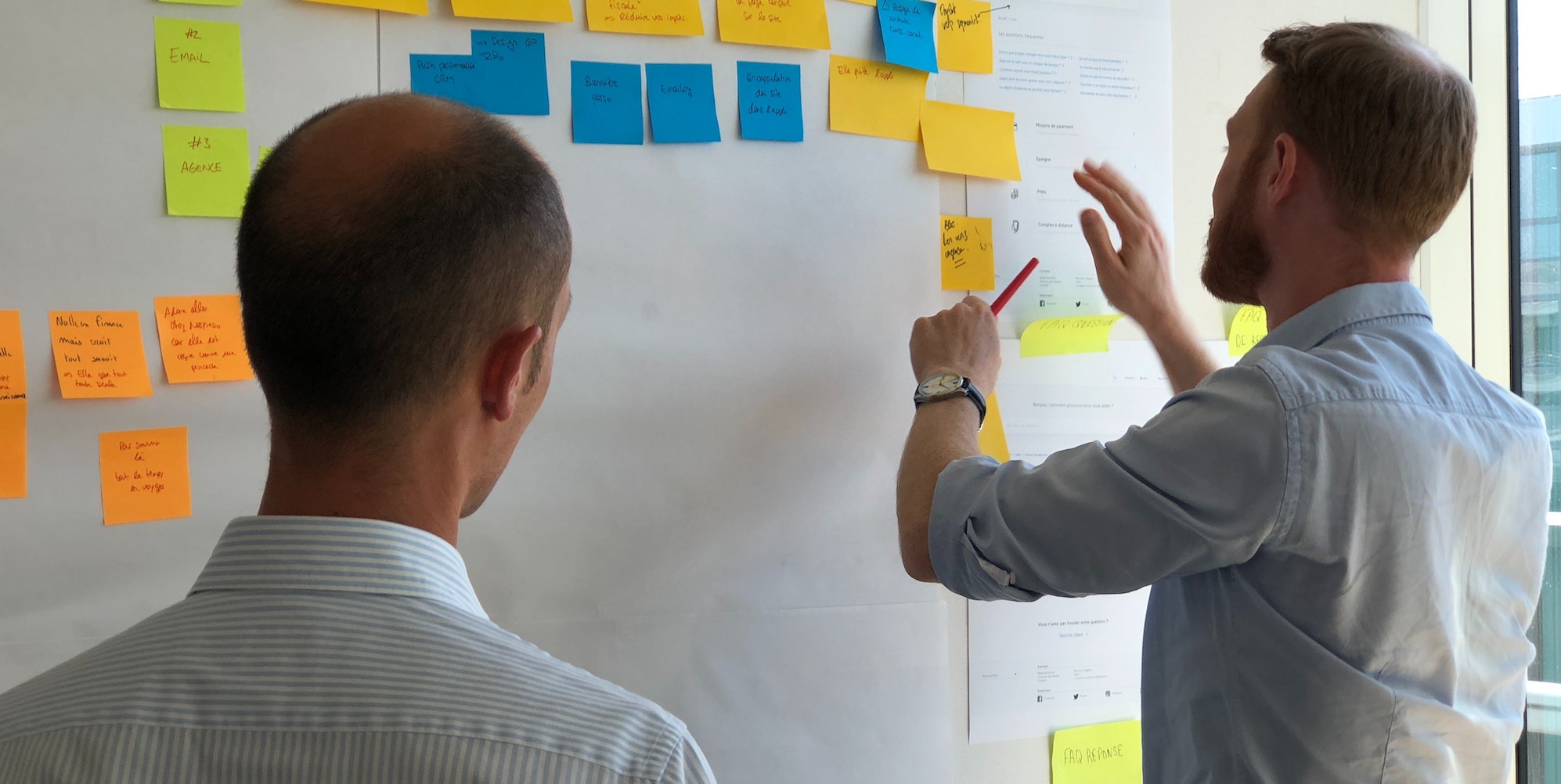Hidden Costs of Not Having a Team of A-Players
One of the teams I work with was approached about a potential, second-to-none acquisition that came with an impressive leadership team. As we discussed that benefit, my client looked around the room and realized his team was not in the same league. So we had a frank discussion about the serious impact on his company if he made this acquisition. If his team wasn’t all A-Players.
He’s not alone. Most organizations to start with, only have 25% to 30% of A-players on their team.
Defining an A-Player

Players are defined according to their fit with core values and performance or productivity:
- An A-Player fits your culture well and delivers consistently excellent results. In school terms, they would get a 90% or higher grade on both. They are creative and efficient, and you love working with them.
- A B-Player fits the culture very well but doesn’t consistently get an A grade on the quality of their work or hitting deadlines. They are productively good.
- A C-Player doesn’t achieve the expected results and they don't fit the culture.
And then there are the Toxic As who consistently deliver outstanding results but are a nightmare to work with because they create a lot of drama or friction. They’re often the hardest people to remove, because are so good at what they do and a force to be reckoned with. If they’ve stayed for a long time, they generally have some sort of power, or relationship with the CEO or some other weird dynamic, that has kept them in their role.
The costs of not having an all A-Player team
1. More work for you
When you work with an A-Player, there’s not much to do, beyond giving a little guidance.
But if people are unable to confidently take on and execute tasks well and on time, you turn into a micro-managing babysitter. You can’t trust that the job is going to get done as expected. You know this is true if you are focused on a lot of short-term, day-to-day stuff.
With a Toxic A, you have to manage conflict or drama.
Caveat: Micro-managing can also be the result of your bad habits and how you lead. When we work with a new company, we try to unpack if the CEO and leaders are involved too much, and if the team has more capability. Often, it’s a little bit of both - a solvable problem if people are coachable into better habits.
2. Less achievement/results
A-Players give you more value for money. A Toxic A- or B-Player – who likely makes the same salary as an A-Player yet doesn’t deliver the same results and takes more time to manage – can drain your organization of its strength and ability to achieve.
You are also unable to take on new projects. Imagine setting priorities and strategy, at an off-site annual or quarterly workshop, with a team of few or no A-Players. You have a big new project – say, to implement a new CRM or to expand into a new area – and realize you have no confidence in anyone on the team. As a result, you take on no big projects, or fewer that take longer to achieve. The cost in resources, time and energy is higher and the results, lower. You simply achieve less and squander resources.
3. More stress for the whole team
Aligned A-Players, heading in the same direction, generally only create healthy friction. But a B- and C-Player team who isn’t as capable, or a Toxic A who doesn’t align with your values, are less productive and create misunderstandings which compound. Even one C- or Toxic A-Player creates more stress and frustration for the team.
Think of this as a relay race team. If you have one person who can barely run, and can’t pass the baton to somebody else, or who creates drama and problems, the whole team pays a price.
4. You have to fix more mistakes
Mistakes and messes result from incompetence or mediocrity and relational service and quality issues. And while A-Players can make mistakes, they generally fix them quickly, without you getting involved.
High performers want to work with high performers.
5. Leadership becomes undermined
When you don’t deal with a Toxic A or C-Player, your leadership is undermined as people question why you don’t deal with them. If you keep these players on the team, you endorse their behaviour, and demonstrate that being a toxic jerk is okay in your culture.
6. B-Players tend to hire lower Bs or Cs
It takes a confident person to hire someone more capable than they are. If someone performs at a 78% level, they’re less likely to hire someone who’ll perform at 110% level.
If Bs or Cs on your team are involved in hiring, they’re not going to hire an A. The more Bs you have, the more Bs and Cs you get, and the spiral downward continues.
If you drop an A-Player into a team of Bs, and Cs, three things will happen:
- That employee will either drop down to the level of the B’s, and C’s, or
- They will be out quickly, because they want to be in a winning team, or
- They’ll voice their frustration - and if you don’t fix it, they will leave.
No-one wins
Identifying and keeping someone who isn’t an A-Player doesn't help anyone. Ignoring the situation doesn't serve your organization and it prevents that person from being an A-Player at another company where they can be a better fit. Consider that, most of the time, C-Players or Toxic As just aren’t happy.
The Challenge
- Based on reading this article, you are going to be thinking about a couple of people situations you need to sort out?
- What are those three situations?
Want to hear more? Listen to Episode 88 of The Growth Whisperers.
We have a team of people who can transform executive and leadership teams from 25% or 30%, to 70%, 80% and 90%. If you need help with this, please reach out.
Lawrence & Co’s work focuses on sustainable and enhanced growth for you and your business. Our diverse and experienced group of advisors can help your leaders and executive teams stay competitive through the use of various learning tools including workshops, webinars, executive retreats, or one-to-one coaching.
We help high-achieving leaders to have it all – a great business and a rewarding life. Contact us for simple and impactful advice. No BS. No fluff.
6 BHAG Mistakes to Avoid
Let’s talk about BHAGs – those Big Hairy Audacious Goals (a concept described in Built to Last by Jim Collins) meant to lead a company into the future. Defining them is like saying what you want to be when you grow up.
BHAGs are so big they take your breath away and are the catalyst to stimulate progress and to keep people engaged.
Like the 1961 US BHAG to put a man on the moon.
There’s a way to set your BHAGs to give them the best chance of success, so let’s talk about what not to do by analyzing the six BHAG mistakes to avoid.
1. The BHAG doesn’t fit your Hedgehog
Your BHAG must be tied to what you can be the best at, what you’re deeply passionate about and what drives your economic engine. This is what Jim Collins calls The Hedgehog Concept.
You can’t build a BHAG with any substance unless you’ve honed in on your hedgehog. Revenue-motivated entrepreneurs may say they want to be a hundred million or billion-dollar company, but if that’s not tied into anything it’s just setting your biggest incremental number.
And, by connecting it to your Hedgehog, you apply a disciplined filter woven into the strategy of your business.
2. The wrong timeframe
BHAGs should be a minimum of 10 years and no more than 30 years out.
Not three years, not five.
It’s far enough in the future that logic shouldn’t prevail. You want to think big, dream big, and not be caught up in today’s environment.
And don’t pick a specific date to achieve it. You just can’t plan how your BHAG will land 15 years from now.
3. It’s not your core competency
There has to be a connection to your core competencies - what you can be the best in the world at though relentless execution and continual improvement that drives profit.
4. It’s not inspiring
You need a North Star to guide you - to mean something and be connected to your purpose and core values. Driving towards it is its own intrinsic reward.
Does it get the creative juices of the team flowing?
Is it something that people think would be awesome if you did it?
Is it worth the devoted effort of 10 or 20 years of creative energy?
5. It becomes wallpaper
You have to constantly breathe life into your BHAG or it will fade.
It’s got to be ingrained into the hearts and minds of the entire company.
It’s your rallying cry - who you are, what you’re about and the difference you’re making. But you have to keep singing it out to keep it alive and relevant.
6. It’s too easy and too small
Your BHAG should challenge your existing capabilities. There should be massive holes in your plan that you don’t yet know how to fill. If it’s too easy, you’re not going to make the changes required to continue to get better and better.
Getting your BHAG right takes work and a lot of debate. But if you get your hedgehog nailed first and sync it back to your purpose, it’s incredibly powerful. It keeps you inspired and focused for the long haul, which is what it’s about.
The Challenge
- How relevant is your BHAG to what you do?
- What can you do to either enhance/update your BHAG, or if you’ve nailed it, bring it more to life?
We highly recommend this great article called Building Your Company’s Vision by Jim Collins and Jerry Porras to walk you through core purpose and values, and BHAG.
If you need help to create or dust off your BHAG, let us know.
More details on Episode 87 of The Growth Whisperers.
Lawrence & Co’s work focuses on sustainable and enhanced growth for you and your business. Our diverse and experienced group of advisors can help your leaders and executive teams stay competitive through the use of various learning tools including workshops, webinars, executive retreats, or one-to-one coaching.
We help high-achieving leaders to have it all – a great business and a rewarding life. Contact us for simple and impactful advice. No BS. No fluff.
Using Productive Paranoia as a Critical Leadership Tool
Paranoia can be a healthy thing – when it’s productive. When you put it to work.
Jim Collins has written extensively about this concept in his books, particularly in Great by Choice, and it’s something I live and breathe.
If you keep cycling through worrying or obsessive thoughts - scanning for something bad to happen - you’ll drive yourself mad.
But what if you used those thoughts to identify a risk, and then do something constructive about it? That would be productive.
Black clouds, silver linings
Let’s compare that to optimism. Pure optimism can be dangerous if you always believe things will be great and don’t stop to flip over the coin - to identify those risks that can take you out of the game,
Andy Grove, founder and CEO of Intel, described it well when he said he’s always looking for the black cloud in the silver lining. He also recommends having a “helpful Cassandra”, someone to criticize his ideas, and to look for problems and gaps in his thinking.
The only way to survive and build an enduring business is to constantly scan with a measure of productive paranoia.
For example, an executive team I work with became very excited about a massive expansion for the company, and the bank was on board, willing to give them all the money they needed. But I just couldn’t get on board with levering up the balance sheet with a lot more debt until I knew they had identified all the brutal things that could take them out – and had done the work and to see if each one could be either mitigated or absorbed. Using productive paranoia the company to be able to endure, no matter how well or poorly the expansion went.
A mindset
In a super-positive environment with an exciting vision and a strategy that you believe in - or after a series of big wins or a booming market – you can get separated from the data, overly confident or too relaxed about notable risks. It’s a great way to get knocked out.
You can’t just keep pushing blindly ahead. You have to keep looking over your shoulder and ask, “What if this happens, or what happens if that happens?”
I’m the guy who started ordering N95 masks and other supplies, in February, when I first heard about the Corona virus. And I’m the guy with a 72-hour emergency bag in my vehicle, and the best studded snow tires because I regularly drive through mountain passes in winter.
I identified the risks and then got productive with my paranoia.
It’s a mindset to be super prepared and set yourself up to win.
“The only mistakes you can learn from are the ones you survive.”
Ask “What if?”
What if this customer fails or doesn’t pay?
What are the outcomes if our product doesn’t get delivered on time?
If half of our employees resigned, what would happen?
What if the plane crashes? (That’s why many companies won’t allow the whole executive team on the same plane.)
This isn’t about worrying about everything, all the time. It’s about putting yourself in a superior position by being prepared with plans to mitigate foreseen and unforeseen risks. Call it risk management.
And if you are wrong 90% of the time, the 10% you are right enables you to survive.
This is about responsibility - to your customers and your employees, to make sure your organization exists, and is healthy years from today – and leads and connects to using productive paranoia.
Two examples chosen by CEOs:
- Keep cash on hand
One CEO keeps about 10% of revenue in cash. So, if you’re a $200 million business, that’s about $20 million on hand, at any time.
- Act quickly
Start with plans A, B and C, so that you don’t have to spend a lot of time obsessing over the risks. When you need to, proceed aggressively and optimistically with Plan A, knowing the worst-case scenarios are covered.
The Challenge
- How could you be more effective using productive paranoia:
- At Work?
- For your Self?
- In your Life?
For more stories and example of productive paranoia, listen to Episode 86 of The Growth Whisperers.
Lawrence & Co’s work focuses on sustainable and enhanced growth for you and your business. Our diverse and experienced group of advisors can help your leaders and executive teams stay competitive through the use of various learning tools including workshops, webinars, executive retreats, or one-to-one coaching.
We help high-achieving leaders to have it all – a great business and a rewarding life. Contact us for simple and impactful advice. No BS. No fluff.
7 Common Strategy Mistakes
Very few people really understand and are good at strategy.
They confuse it with things like execution or marketing or setting goals.
That’s why we recommend the Illustrated Guide to Michael Porter written by Joan Magretta (conceived by Henrik Zimmermann and illustrated by Emile Holmewood). This is a powerful tool anyone can use as a filter to evaluate their own strategy and to help avoid critical strategy mistakes.
Porter, a professor at Harvard Business School and author of 19 books, is one of the world’s most influential thinkers on management and competitiveness.
According to Porter, these are the seven most common strategy mistakes people make:
1. Competing to be the best
You don’t want to be just a better version of what someone else is doing. Your job is to build a unique and valuable position in the market in a way your customer cares about. Think Tesla.
2. Substituting execution for strategy
Of course, you need great execution to make a profit, but if you only look through an execution lens, you’ll lose your strategic advantage.
“Execution is doing what we already do better.
Strategy is doing better or different things in the eyes of the customer."
3. Confusing marketing with strategy
Marketing is critical, to find a way to better tell a story and match it with the needs of your customers. But it doesn’t consider the tailored value chain, or the inputs, or how to alter the inputs to provide difference within the market. And while brand is important, it’s not everything. Strategy always comes first.
4. Chasing the wrong goals
The right strategy isn’t chasing the latest fad or your competitors. The job of a business and the number one measure of a CEO is return on capital. Being crystal clear on the stuff that matters most requires a lot of debate and analysis – and it can take time.
5. Overestimating your strengths
What are your core competencies? Hint: It’s not your name, how long you’ve been in the market or your CRM. A real strength is something your company can do better than any of your rivals.
You must have differentiation to be sustainable, to be more appealing to customers and make it easier for salespeople to sell.
6. Getting the definition of the business wrong
Have you been looking at your business generically, or have you really zoomed in? Sometimes, you’re not doing what you think you are doing, and you miss the business you are really in.
Porter’s Five Forces is a great tool to really understand and breakdown the different industry forces acting on your business. Your strengths, activities, core customers and profit can change remarkably when you get this right.
7. Getting the geographic scope wrong
Exactly where are the edges of your sandbox in which you’re going to play?
Whether global, national or local, every market has a different scope, customer and value chain. And people can get into trouble when they think that expanding into another market is an extension of what they are already doing. As well as market differences, you’ll cross the boundary of where your competitive advantage stops and you have to be prepared to build it differently.
Often, starting a simple expansion is like starting a brand new business.
The Challenge
Of the strategic areas highlighted above:
- Which are you excellent at?
- Which would help you improve strategy and competitiveness the most if you mastered them?
For more about common strategy mistakes, listen to Episode 84 of The Growth Whisperers.
Lawrence & Co’s work focuses on sustainable and enhanced growth for you and your business. Our diverse and experienced group of advisors can help your leaders and executive teams stay competitive through the use of various learning tools including workshops, webinars, executive retreats, or one-to-one coaching.
We help high-achieving leaders to have it all – a great business and a rewarding life. Contact us for simple and impactful advice. No BS. No fluff.
How to Get the Most from Your Strategic Planning Process
After working with hundreds of companies around the world to dial in a tight strategic planning process, we have found that things can loosen over time.
When you’re in the middle of running your business, fighting battles and making things happen, it’s hard to stay focused on your competitive advantage.
So, here are six ways to get the most from your strategic planning process, and stay focussed on learning and improving.
1. Find the right framework
The right framework helps you to get clear, helps to organize your thoughts, and aligns the rest of your team and company. It also allows you to take the time to zoom out and focus on the business rather than being in the business.
There’s a balance between too simple and not simple enough. You don’t need 27 different things to do, otherwise you are less likely to follow through. You want a framework that is easy to implement, allows for deep insights and interlocks to all the other pieces of your business.
As a key driver behind and contributor to the book Scaling Up 2.0, we recommend the use of these tools as a baseline for companies.
2. Find the right facilitator
Make sure you find an experienced facilitator/coach/advisor - a master of the framework and a good fit for your company - to lead the process. This person will do all the prep work, own the meeting agenda and run the meeting effectively to make sure you talk about the right things to get the most value.
Once you implement a strategic planning framework, allow about 18 months on average, until the system settles down into a calm, clear rhythm.
Note: Once you’ve chosen a framework, don’t touch it until you’ve worked with it for a few years, otherwise you assume you’re smarter than the person who built it. That’s like somebody’s removing the radiator from a car to make it lighter, not thinking it’s important.
3. Define a clear vision and culture to align people with strategy
Put time into building a bus that the right people want to get on. Create a journey that people want to join and be excited about.
4. Set a strategy to win
This is not just about what you’re doing but why you’ve got to do it, and how you’re going to do it. What are you deeply passionate about? How are you going to differentiate yourself and meet your customers’ needs?
5. Set SMART goals
Specific, Measurable, Attainable, Realistic and Timebound.
Prioritize your top three to five goals for three to five years which have a tangible outcome for the business.
6. Create an accountability-learning loop
This is about standing up to deliver on the progress (monthly) and accomplishment (quarterly) of your goals, financials, and KPIs. It maps your goals/ projects around your people - against actual company execution goals.
When someone doesn’t deliver, ask:
- Was it bad strategy?
- Or was it bad execution?
Those are the only two options: either you didn’t think well, or you didn’t work well. (Thanks to Dave Baney for this one.)
This accountability creates a tension that leads to learning and improving. And it drives growth – as you get better and faster through quarterly cycles.
This can be hard for some CEOs and leaders to do and where a coach can also add value.
The Challenge
- What things are working well with your strategic planning process and how can you enhance them?
- How can you take your strategic planning from good to great?
- What isn’t working, and what can you do to fill the gaps to make the process more effective?
For more about this, listen to Episode 85 of The Growth Whisperers.
If you need help from one of our professional facilitators, please reach out.
Lawrence & Co’s work focuses on sustainable and enhanced growth for you and your business. Our diverse and experienced group of advisors can help your leaders and executive teams stay competitive through the use of various learning tools including workshops, webinars, executive retreats, or one-to-one coaching.
We help high-achieving leaders to have it all – a great business and a rewarding life. Contact us for simple and impactful advice. No BS. No fluff.
Profit = Intelligence x Discipline
Are you maximizing profitability, or could your business grow twice as fast as it does now?
I'm not saying it could, but just stick with me for a second.
Consider these two major variables:
- Intelligence or how smart your strategy is, and
- Discipline in execution.
If you have intelligence, and no discipline, you get nothing. Your intelligence is useless. And discipline without intelligence can also lead to zero profit.
As you grow and take things for granted, one of these variables often gets a little weak. Your strategy loses some of its edge, discipline gets a bit loose.
On Intelligence
Intelligence of your business model, your strategy, the way you present and understand the market, and the way you meet the customer needs.
- Business models vary greatly: Not all are equal, even within the same industry. Intelligence is knowing how to maximize a model or see opportunities that others can’t – such as how to price smartly, to buy something, or get a resource at an incredible price.
- Iterate and execute: Iterate to turn good ideas to great ideas – and then execute with discipline, over time. Use feedback and insights to make them better.
- Analyze the data: Take the time to zoom out of daily accounting tasks to gather data that provides insights on how to run the business better and how to evolve your business model to be significantly more profitable.
- Best practices are common practices: Industry averages and best practices drive you into the mediocre middle. If you look at industry data, look at the best - the highest performing one or two companies in your industry is the best benchmark.
On Discipline
- Discipline is learned: Ideas are a dime a dozen, but you need discipline to execute and bring them to life. Like deep financial, KPI and goal reviews, and accountability.
Discipline is about getting little things right 100 times in a row rather than one big thing right once.
- Stay on track: External oversight to keep you from distraction is essential. Such as a coach or advisor to understand the strategy, run strategic meetings, focus on the right data and metrics, and structure priorities. To run full financial, rock, KPI, customer and employee feedback, and talent reviews. To debate issues and set goals and action plans.
The Challenge
- Where is the biggest opportunity for growth in your company, for maximizing profitability – intelligence or discipline?
- What’s the number one move you could make now?
For more about why this matters, listen to Episode 82 of The Growth Whisperers.
Lawrence & Co’s work focuses on sustainable and enhanced growth for you and your business. Our diverse and experienced group of advisors can help your leaders and executive teams stay competitive through the use of various learning tools including workshops, webinars, executive retreats, or one-to-one coaching.
We help high-achieving leaders to have it all – a great business and a rewarding life. Contact us for simple and impactful advice. No BS. No fluff.





